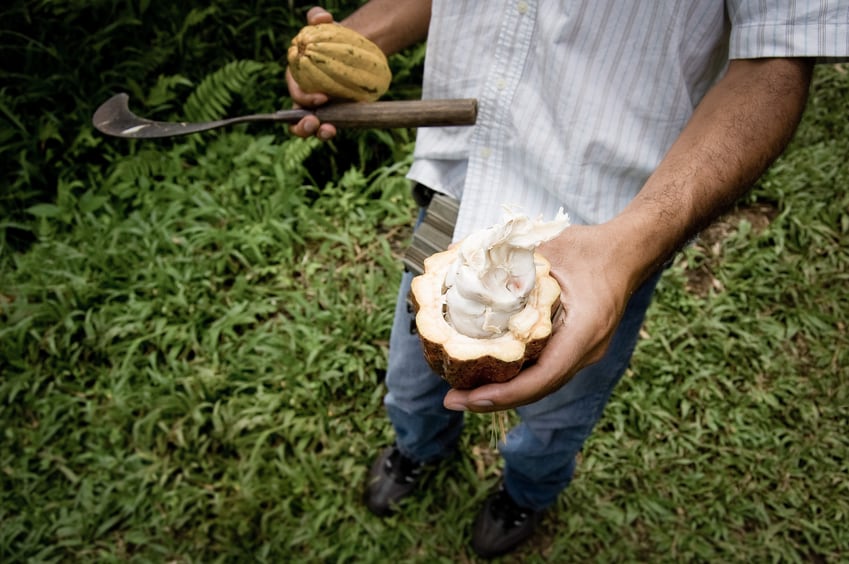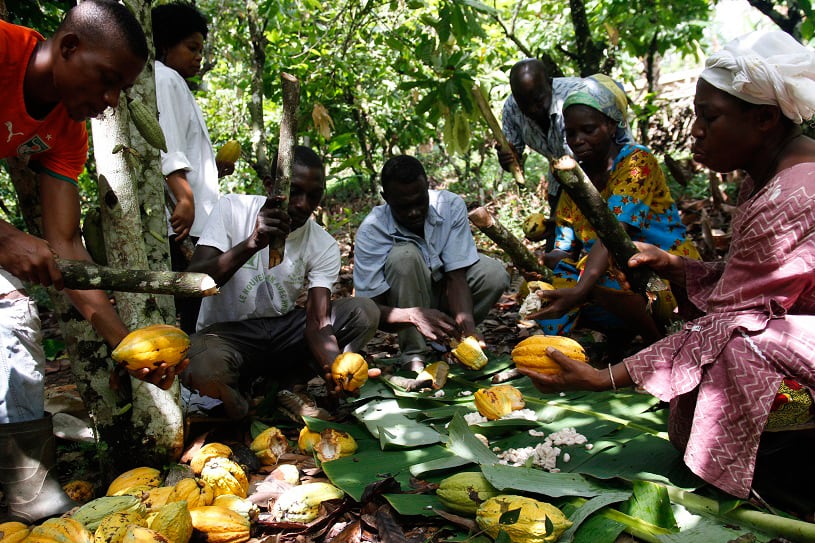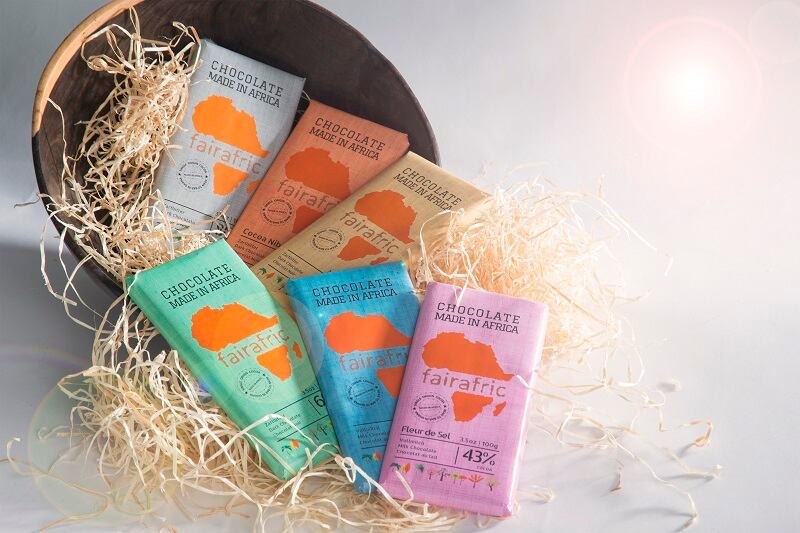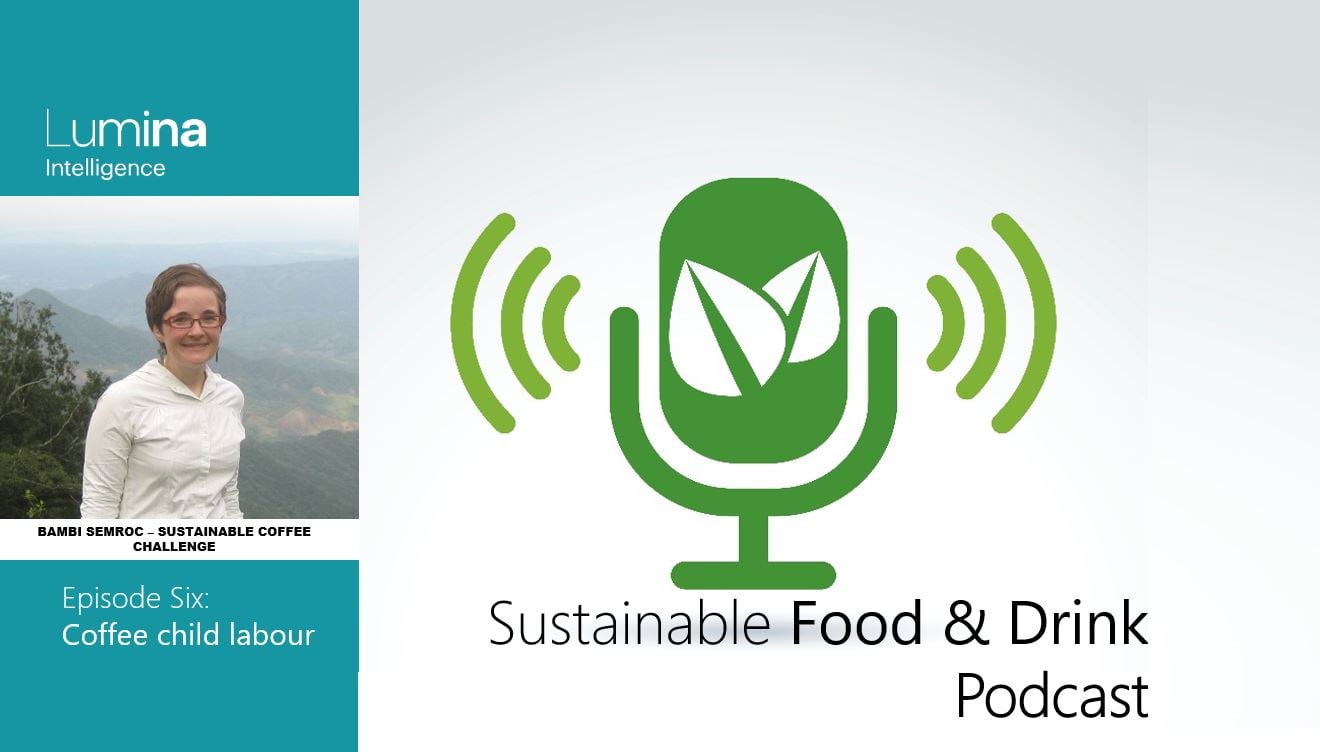From low farmer incomes to child labour and negative environmental impact, the cocoa supply chain features serious challenges.
Volatile cocoa prices place smallholder farmers in cocoa producing regions at risk of sharp income shocks. Between September 2016 and February 2017, for instance, cocoa income declined by as much as 30-40%.
Child labour remains at high levels in the sector, with an estimated 2.1 million children working in cocoa fields in the Ivory Coast and Ghana alone.
Expanding cocoa production is also a contributor to negative environmental impacts, such as deforestation. A recent report from Mighty Earth highlighted the problem, documenting how in several national parks and other protected areas in the Ivory Coast and Ghana, 90% or more of the land mass has been converted to cocoa.
Despite these issues, Olam Cocoa CEO Gerry Manley believes that the commodity represents 'one of the better' economic development options for cocoa growing regions.
“We have to realise that the reason people are in cocoa is because it is one of the better crops that smallholders can manage to produce… You are seeing many other crops that aren’t yielding the value to a farmer that they were three or four years ago. Whether it's palm, or rubber, or coffee.”
Despite cross industry initiatives like the World Cocoa Foundation (WCF), which is meeting in Berlin this week, the industry has faced some stinging criticism for its failure to deliver ‘meaningful’ progress. VOICE Network's 2018 Cocoa Barometer noted: “Sector-wide efforts to improve the lives of farmers, communities and the environment are having little impact; the scope of proposed solutions is not even in the ballpark of addressing the scope of the problem.”
Manley has a different view and, speaking to FoodNavigator, he stressed the progress that Olam Cocoa has made since it launched its Olam Livelihood Charter in 2010.
“Sustainability has always been very key for us. We started our first initiative in 2004 in Indonesia and that is a programme that still runs today… We have been a founding member of WCF. We have joined various initiatives over the years, more recently the Cocoa and Forests initiative,” he noted.
These efforts have delivered some concrete results, Manley continued. “We have 64,000 farmer development plans. We have 240,000 farmers trained in good agricultural practices over the past 9 years… 95,000 farmers are covered by our child labour monitoring and mediation system… We have built 41 schools with our partners and distributed 28m cocoa seedlings and 1.3m agro-forestry trees. With our partners, the chocolate industry and our customers, we have paid over $136m in premiums.”
These milestones represent a ‘foundation’ that Olam Cocoa now plans to build on through a new and ambitious sustainability agenda: Cocoa Compass.
“We have come to a point in time where the Olam Livelihood Charter has given us a foundation. We realise that the environmental piece is taking much greater prominence. [Cocoa Compass] is refreshing our whole thought process. There are issues in our supply chain and we want to see how to… drive the greater goals.
“Let’s set ourselves long-term goals that are going to challenge us,” Manley said.
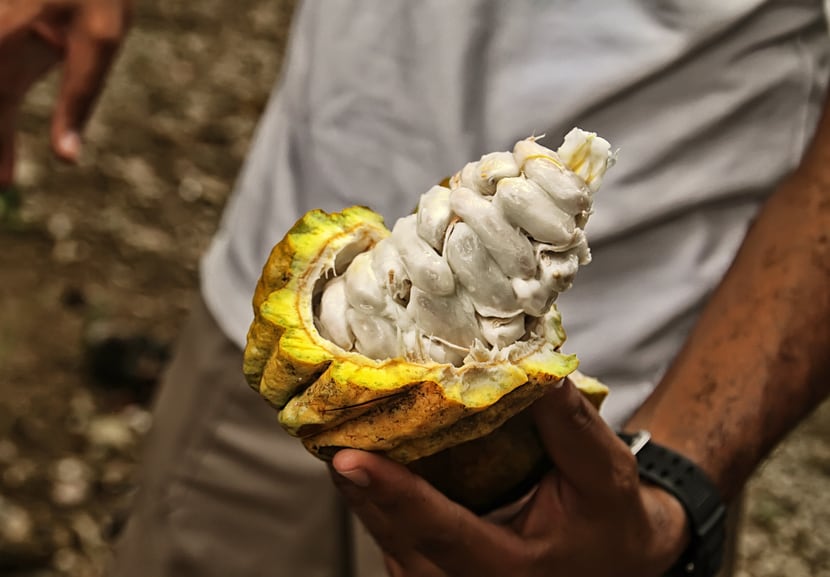
Three pillars: farmers, communities and nature
Through the Cocoa Compass initiative, Olam Cocoa wants to develop an ‘environmentally positive’, professionalised and quality cocoa supply chain.
The 2030 roadmap is framed by three pillars, which Olam Cocoa identifies as ‘focused on farmers’, ‘empowered to grow’ and ‘investing in nature’.
The group has set the goal of increasing the income of its cocoa farmer suppliers to a ‘living income’, currently defined by Fairtrade International as $7,300 per year.
“We want by 2030 to have 150,000 cocoa farmers in our supply network who are achieving a living income. A living income for us is defined as $7,300 but whatever it might be by 2030 we are clear that is what we are going to push for,” Manley explained.
By 2024, Olam Cocoa wants 60,000 farmers to be making a living income. This, Manly said, is above many of the targets set by industry peers.
“What a number of companies are doing is looking at taking people out of poverty. That’s not our aim. Our aim is to ensure they have a living income, so we actually have prosperous farmers.
“We want to concentrate on the cocoa farmers, we want to make sure it is a valuable and viable living. Cocoa can’t be sustained by poverty farming.”
The company also intends to stamp out child labour in its supply chain. And while progress has been made in this area over the past nine years, Manley said Olam Cocoa is accelerating here too.
“We want to eliminate child labour. That is making sure all the children that today are in our supply chain all have access to education. That is absolutely important for us.
“It is about making sure the schools are available. And if children aren’t going to school, we need to understand the reason why. There are infrastructure issues… Monitoring and understanding the reasons and putting in a remedy, that is the only way we are going to eliminate child labour.
“We realise it is incredibly complex. It is not something we can do alone. The governments in most countries are very active and we participate.”
The final plank for Olam Cocoa’s new programme is cutting the environmental impact of cocoa farming. “We are very mindful of the carbon cocoa stock that we have and we are really looking to see how we can look at natural capital and what it costs,” Manley expounded.
“We want to make sure that cocoa can be delivered as an agro forestry business. We see benefits of that as well… There is a lot of work we are doing on that and recently we established a plant science function within Olam to look at the challenges we have. We are looking to replant forested areas and see how we can bring shade trees.”
Improving agricultural practices
One of the core principles underpinning Olam Cocoa’s sustainability drive is the need to improve agricultural practices. By lifting productivity, Olam Cocoa believes it can tackle a variety of issues from farmer income, to boosting quality and improving soil health.
“Where cocoa is grown it is really the most important crop. What we have to do is improve the value that farmers can get from cocoa. We can double the production rate… That is the goal on productivity and that is going to be important.
“Good agricultural practice, the training, the pruning of the trees, using fertiliser and other farm inputs at the right time of the year for maximum benefit. Some of these are relatively simple,” Manley said.
“People don’t want to be cocoa farmers. How do we make sure it is a viable business? We have to be empathetic to the lives the farmers have led. But clearly, they are cutting down the trees. We truly believe in protecting forests and looking to see how we can bring agro-forestry back into the cocoa world in a much stronger way.”
Olam Cocoa wants to see the emergence of a more ‘professional’ cocoa farmer and believes that addressing land security is an important issue.
Manley explained: “We strongly believe land tenure is important. You are never going to take a farmer out of poverty if all he has to operate on is two to three hectares of land. This is going to have to be addressed to farmers that are more professionalised. We are looking for farmers who can be encouraged to take larger farms in excess of five hectares.”
Part of the solution is also diversifying farmer income and Olam is ‘looking’ at ways this can be achieved. Partly, this can include crop diversification with the introduction of other cash crops. Other options include a project to support animal rearing in Ecuador and the introduction of beehives. “It is not something that can be done in one year’s time.”

